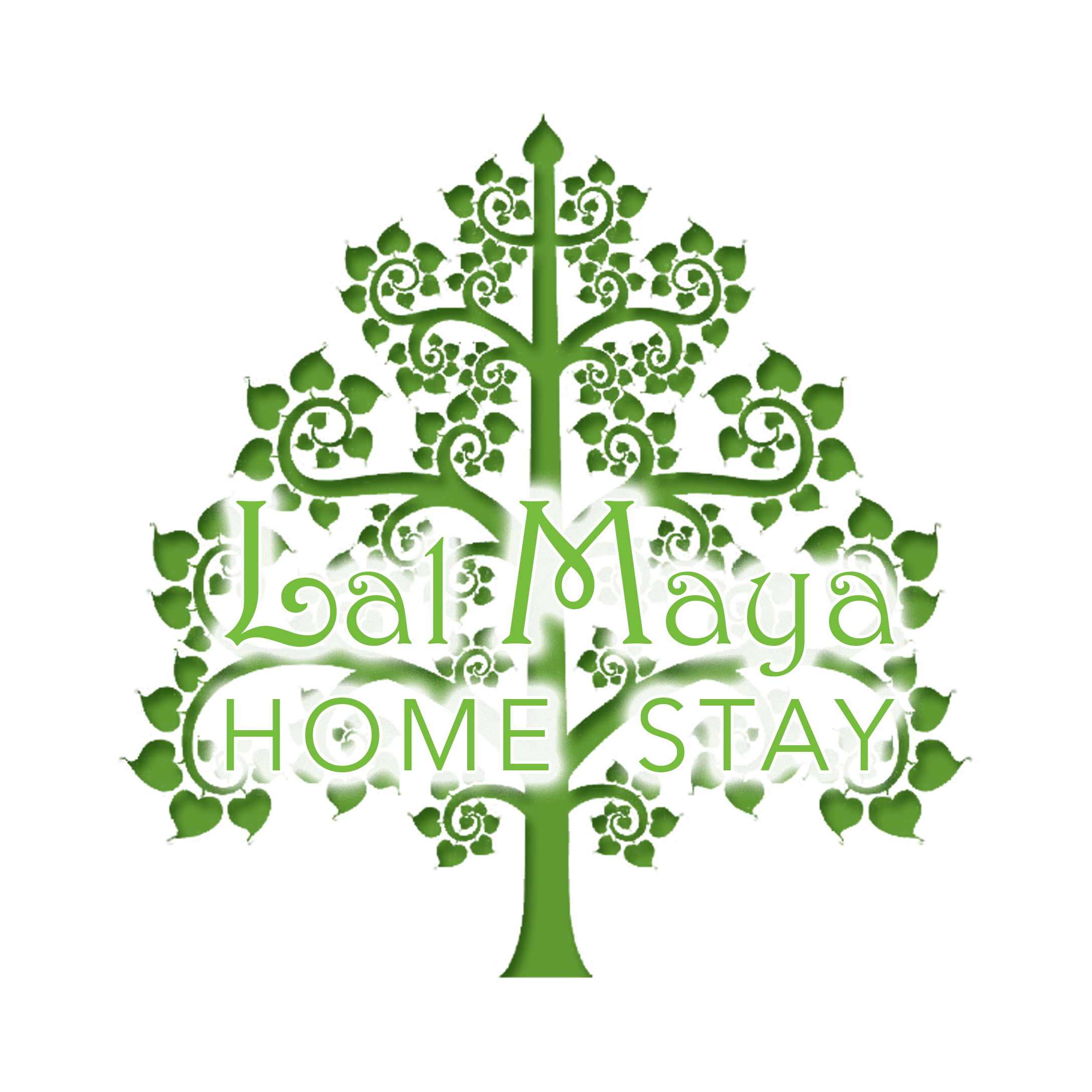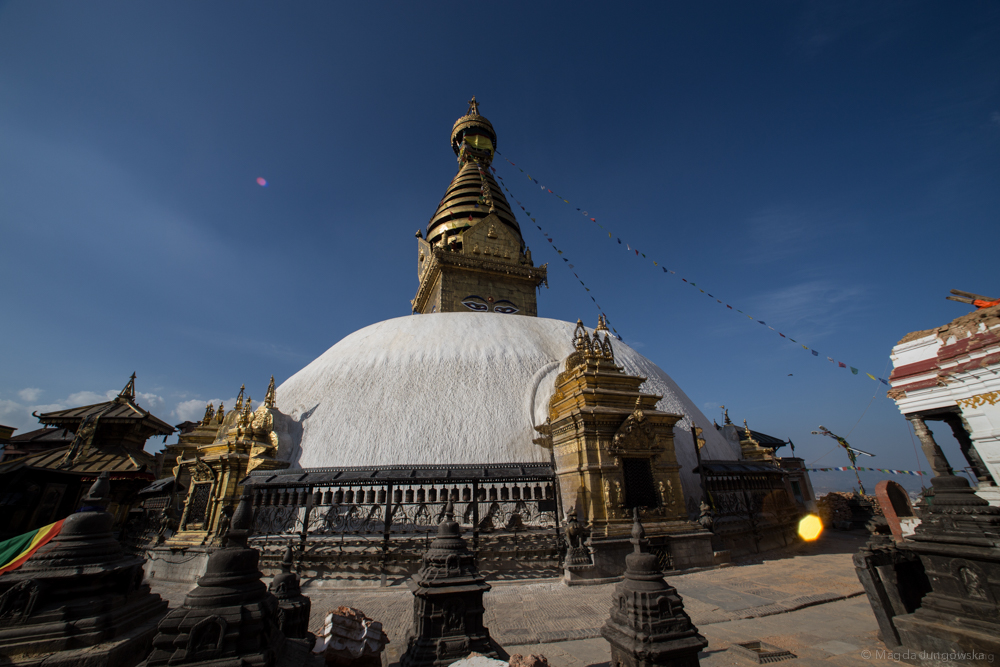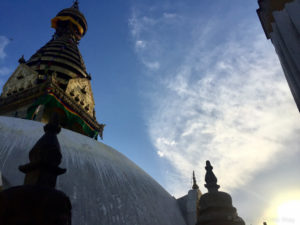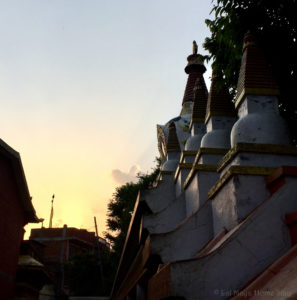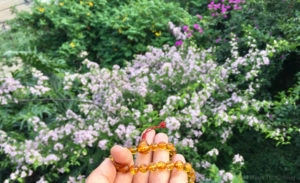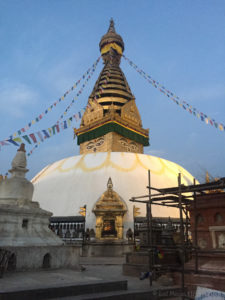Some say the temple was founded about 2,000 years ago, when Kathmandu Valley was filled with a great lake. According to stories and legends, a single perfect lotus grew in the center of the lake. When Manjusri a bodhisattva drained the lake with a slash of his sword, the lotus flower settled on top of the hill, which then magically transformed in to a stupa. Thus it is know as self created ( swayambhu) stupa.
A 5th- century stone inscription is the earliest written record at Swayambunath Stupa, but there is a debate of probable old shrines here as early as 1st century.
Nepal’s one of the oldest Buddhist temple is Swayambutnath and it has an enchanted feel when approaching on foot while climbing the 365 steps.
Swayambhunath is an ancient religious complex atop a hill in the Kathmandu Valley, west of Kathmandu city. The Tibetan name for the site means ‘Sublime Trees’ (Wylie:Phags.pa Shing.kun), for the many varieties of trees found on the hill. However, Shing.kun may be a corruption of the local Nepal Bhasa name for the complex, Singgu, meaning ‘self-sprung’. For the Buddhist Newars in whose mythological history and origin myth as well as day-to-day religious practice, Swayambhunath occupies a central position, it is probably the most sacred among Buddhist pilgrimage sites. For Tibetans and followers of Tibetan Buddhism, it is second only to Boudhanath.
The Swayambhunath complex consists of a stupa, a variety of shrines and temples, some dating back to the Licchavi period. A Tibetan monastery, museum and library are more recent additions. The stupa has Buddha’s eyes and eyebrows painted on. Between them, the number one is painted in the fashion of a nose. There are also shops, restaurants and hostels. The site has two access points: a long stairway with 365 steps, leading directly to the main platform of the temple, which is from the top of the hill to the east; and a car road around the hill from the south leading to the southwest entrance. The first sight on reaching the top of the stairway is the Vajra.
Directions from our Home Stay to the Swayambhu Stupa:
